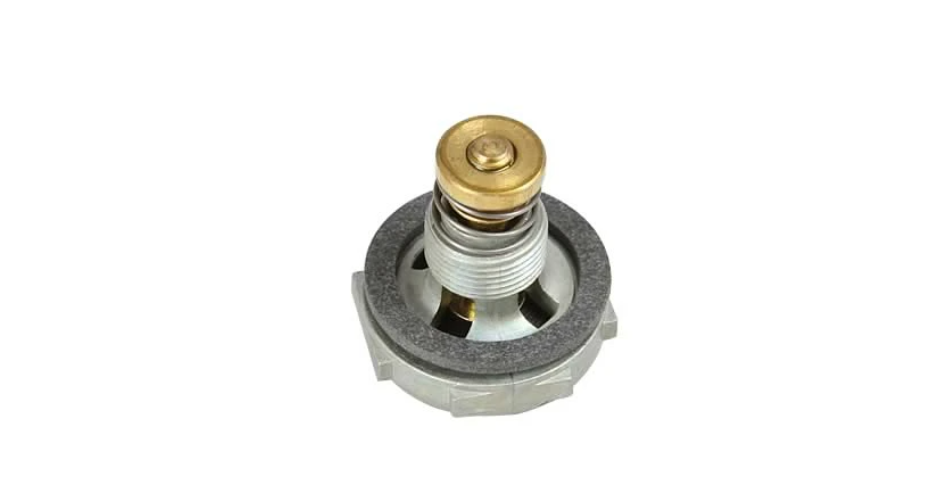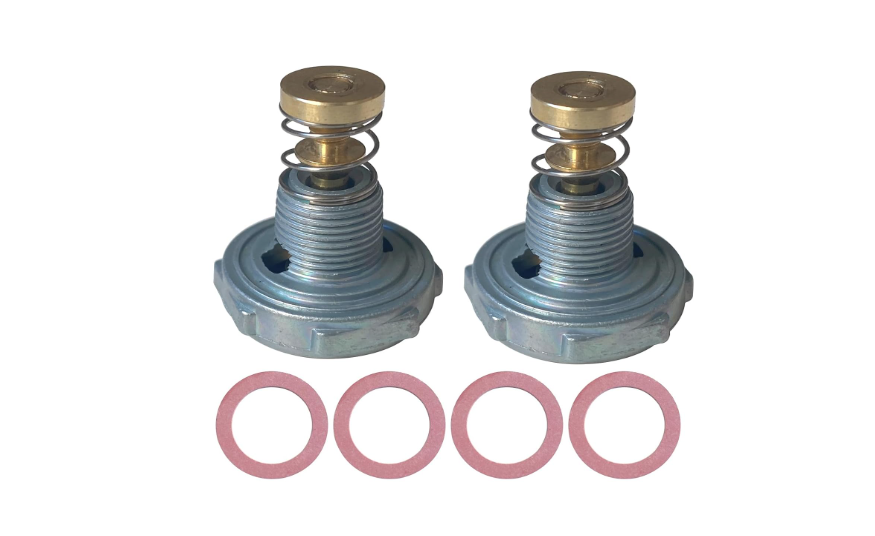A 4-door power valve provides more aggressive fuel enrichment due to its four fuel enrichment doors, making it ideal for high-performance and racing applications. In contrast, a 2-door power valve delivers a more controlled and gradual fuel flow, making it better suited for daily drivers and street vehicles where fuel efficiency is a priority.
Power valves play a crucial role in regulating the fuel mixture in carbureted engines, providing additional fuel when needed, such as during acceleration. Understanding the difference between a 4-door and 2-door power valve is vital for anyone working with performance carburetors.
Contents
4 Door Power Valve
A 4 door power valve has four fuel enrichment holes, allowing fuel to flow through at a higher rate when compared to a 2-door valve. This design is commonly used in high-performance applications where quick bursts of power and fuel are essential. Below are the primary characteristics of a 4-door power valve:
- Increased Fuel Flow: With four enrichment doors, the valve provides a higher fuel volume when activated.
- High-Performance Usage: Ideal for engines that need rich fuel mixtures during rapid throttle increases.
- More Aggressive Fuel Enrichment: Great for situations where the vehicle undergoes significant engine load or rapid acceleration, such as in racing scenarios.
- Better for Racing and High-Output Engines: The 4-door valve ensures the engine is never starved of fuel when high output is needed.

2 Door Power Valve
A 2 door power valve operates similarly but with only two fuel enrichment holes, meaning it allows less fuel through compared to its 4-door counterpart. It is typically used in engines where smooth, progressive fuel enrichment is necessary, and aggressive fuel flow is not required. Here are its main features:
- Reduced Fuel Flow: The two enrichment doors allow for a slower, more controlled fuel flow.
- Better for Daily Drivers: Provides a balance between fuel efficiency and performance, suitable for everyday use or light performance.
- More Progressive Fuel Enrichment: Helps the engine manage fuel consumption more effectively during partial throttle, making it more appropriate for street cars and cruising.
- Less Aggressive: More suited for vehicles where fuel economy and manageable performance are key priorities.

4 Door vs 2 Door Power Valve: Key Differences
Here are the some key differences of 4 and 2 door power valve –
1. Fuel Flow
- 4-Door: Provides more fuel flow due to four enrichment doors.
- 2-Door: Restricts fuel flow, making it more controlled and progressive.
2. Performance
- 4-Door: Best suited for high-performance and racing engines where fuel starvation could lead to detonation or power loss.
- 2-Door: Ideal for regular, everyday driving or light performance, where fuel efficiency is crucial.
3. Application
- 4-Door: Used in vehicles where aggressive fuel enrichment is required, such as drag racing, off-roading, or performance builds.
- 2-Door: Fits better in street-driven cars, mild-performance builds, or vehicles that prioritize fuel economy.
4. Fuel Efficiency
- 4-Door: Consumes more fuel during operation due to its aggressive enrichment capabilities.
- 2-Door: Provides better fuel economy since the fuel flow is more controlled and efficient.
5. Tuning Flexibility
- 4-Door: Offers more tuning potential for performance enthusiasts who want to extract every bit of power from their engine.
- 2-Door: Easier to manage and less prone to over-enrichment, making it ideal for simpler setups.
Comparison Table: 4 Door vs 2 Door Power Valve
Comparison table of 2 door and 4 door power valve –
| Feature | 4-Door Power Valve | 2-Door Power Valve |
|---|---|---|
| Fuel Flow | High, more aggressive | Moderate, more controlled |
| Performance | Best for high-performance engines | Suitable for daily drivers |
| Application | Racing, high-load conditions | Street driving, mild performance |
| Fuel Efficiency | Lower due to aggressive flow | Higher due to controlled flow |
| Tuning Flexibility | Highly tunable for performance | Limited but sufficient for street |
| Cost | Typically more expensive | Generally less expensive |
| Ideal Usage | High-output, racing vehicles | Street-driven, fuel-conscious cars |
Choosing Between a 4-Door and 2-Door Power Valve
When choosing between a 4-door and 2-door power valve, the decision primarily depends on your engine’s needs and driving conditions.
When to Use a 4-Door Power Valve:
- Racing Applications: If you participate in competitive racing, drag racing, or other high-speed activities, the 4-door valve’s ability to deliver a large fuel flow quickly is crucial.
- High-Performance Engines: Engines built for high horsepower and rapid acceleration need more fuel at full throttle, and the 4-door power valve ensures this demand is met.
When to Use a 2-Door Power Valve:
- Street Vehicles: If you’re driving a street vehicle, especially one where fuel economy matters, a 2-door power valve is the better choice. It provides sufficient enrichment without the aggressive fuel consumption of a 4-door valve.
- Daily Drivers or Light Performance: For vehicles that don’t see track time but need moderate performance, a 2-door power valve offers enough fuel enrichment without sacrificing efficiency.
How to Tune Power Valves
To get the best performance out of your power valve, regardless of whether it’s a 2-door or 4-door, tuning is essential. Tuning involves selecting the correct power valve based on the vacuum reading of your engine at idle. Typically, you should choose a power valve with a rating around 2 points below your idle vacuum. For example, if your engine has an idle vacuum of 10 inches of mercury (inHg), a power valve rated at 8 inHg is ideal.
Common Tuning Tips:
- Use a Vacuum Gauge: Measure the engine’s idle vacuum to select the right valve.
- Adjust Based on Driving Conditions: For race cars, choose valves that open sooner (lower vacuum rating). For street cars, valves that open later (higher vacuum rating) can improve fuel efficiency.
- Check for Fuel Leaks: A damaged power valve can lead to fuel leaks and poor performance.
Frequently Asked Questions
Here are some FAQs about the 4 Door and 2 Door Power Valves –
Q: Can I switch between a 4-door and 2-door power valve?
A: Yes, you can switch, but it will require recalibration of your carburetor to match the new valve’s fuel flow characteristics.
Q: How do I know if my power valve is damaged?
A: Symptoms of a damaged power valve include poor fuel economy, engine backfiring, and a rich running condition.
Q: Is there a difference in cost between 4-door and 2-door power valves?
A: Generally, 4-door power valves are more expensive due to their performance-focused design.
Q: Can a 2-door valve provide enough fuel for a high-performance engine?
A: In most high-performance scenarios, a 4-door valve is better suited, but some moderate-performance engines may perform well with a 2-door valve.
Q: How do I choose the correct power valve for my vehicle?
A: Measure your engine’s idle vacuum and select a power valve rated approximately 2 inHg below your vacuum reading for the best performance.
Conclusion
Choosing between a 4-door and 2-door power valve depends on your vehicle’s intended use. If you’re building a high-performance engine or participating in motorsports, the 4-door power valve offers superior fuel enrichment. On the other hand, the 2-door power valve is ideal for street driving, offering balanced fuel efficiency and performance. Proper tuning and selection of the right power valve can make a significant difference in your engine’s performance and longevity.